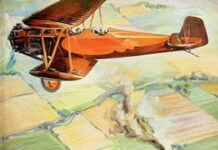Large passenger aircraft continued to make inroads into production schedules, after Deutscher Aero Lloyd merged with Junkers Luftverkehr to create Luft Hansa. New generation airliners boasted more spacious seats, in-flight meals, and even night beds. But others were more utilitarian, with passenger budgets in mind. The U.S. Air Force learned to entertain the public with higher speeds, and barnstorming events.
Junkers continued to take the lead with metal air frames and cladding, although other nations gradually began following the example with large, commercial airliners. The military adopted the trend where they needed speed and precision. A group of enthusiasts proved the golden age was still alive, when they built their own biplane and then produced it commercially.
Humanity benefited from these developments, as postal deliveries improved, and large cities, and even continents, began to connect with regular air services. Smaller commercial aircraft continued to expand their niche with postal services, and innovative new ideas such as land surveying, crop spraying, and personal transport for entertainment and business.
Meanwhile, the war drums were beating louder as larger and more powerful bombers appeared to complement faster fighter aircraft, especially on the European side of the Atlantic. Attempts to implement World War 1 armistice resolutions were in tatters, as the deadly side of aviation stirred from its slumber.

.https://coololdphotos.com/map-of-1920s-u-s-air-mail-routes-across-the-country/?utm_source=mailchimp&utm_medium=email&utm_campaign=Map+of+1920s+U.S.+Air+Mail+Routes+Across+the+Country&utm_content=item-2
JANUARY 1926
Deutsche Luft Hansa airline forms after a merger of Deutscher Aero Lloyd and Junkers Luftverkehr.
American Clifford B Harman introduces the Harman Trophy to be awarded annually to the world’s outstanding aviator, aviatrix, and aeronaut.
A Spanish crew in a twin-engine Dornier Do J Wal flying boat completes a non-stop, 1,429-mile flight from Barrera de Inferno in the Cape Verde Islands, to Brazil’s Fernando de Noronha archipelago in 12 hours, at an altitude of 1,000 feet.
American Stinson Detroiter Utility Monoplane / Biplane Initiative
The Stinson Detroiter was a small airplane planned for six passengers or freight, and designed and built by the Stinson Aircraft Company active between the 1920’s and 1950’s in the United States. There were two distinct models, beginning with a biplane version followed by a braced high-wing monoplane version.
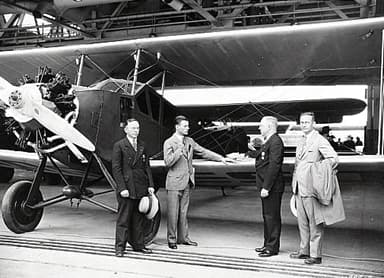
https://commons.wikimedia.org/wiki/File:Stinson_SB-1_Detroiter_biplane_in_hangar.jpg
The original Stinson SB-1 Detroiter was a four-seat cabin biplane with novel features such as cabin heating, individual Harley Davidson motorcycle wheel brakes, and electric starter for the nose-mounted 220 hp engine. It first flew on January 25, 1926 and was an early success.
This encouraged development of the six-seat Stinson SM-1D Detroiter early on. This was a braced, high-wing monoplane version which ultimately made quite a number of significant long-range flights. Some 75 were built with the original Wright J-5 engine, and then another 30 with the Wright J-6-powered motor.
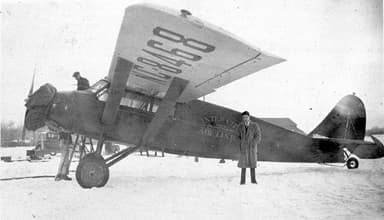
https://en.wikipedia.org/wiki/File:Stinson_SM-1F_NC8468_with_Inter-City_Air_Line_AL77C-038_(14541100063).jpg
The specification of the SM-1F monoplane was as follows:
- Length 32 ft, wing span 46.5 ft, crew one, six passengers
- Wright J-6 air-cooled radial engine 300 hp, max 132 mph

https://commons.wikimedia.org/wiki/File:Stinson_SM-1_cockpit_photo_NACA_Aircraft_Circular_No.60.jpg
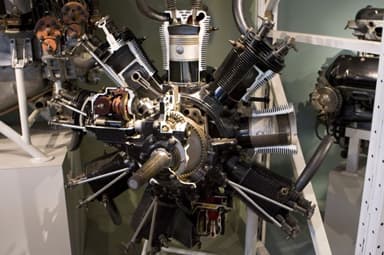
https://en.wikipedia.org/wiki/Wright_Whirlwind_series#/media/File:Wright_J-6.jpg
FEBRUARY 1926
A Curtiss Carrier Pigeon mail plane flying for the United States Post Office strays off course and crashes into a grove of trees.
French Latécoère 25, Small Five Passenger Airliner
The Latécoère 25 was a derivative of the successful Latécoère 17, but with an expanded wing span. It reflected Aériennes Latécoère’s interest in exploring lucrative postal deliveries, and established its South American service. However, it still adhered to the form of a conventional parasol-wing monoplane, with enclosed seating for passengers and an open cockpit for the pilot.
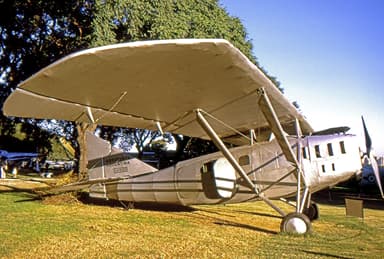
https://commons.wikimedia.org/wiki/File:Latecoere_25_LV-EAB_Aeroparque_12.04.75_edited-2.jpg
The aircraft proved its robustness while exploring a short cut route over the Andes. A downdraught forced it onto a plateau just 980 ft across at an altitude of 13,000 ft.
The pilot, the mechanic, and a French count traveling as passenger spent the next four days repairing and lightening the aircraft, and making a clear path from it to the edge of the precipice. Then they rolled it off the edge, jumped on board, dived to attain airspeed, and successfully reached Santiago.
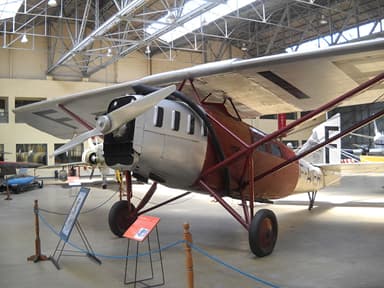
https://commons.wikimedia.org/wiki/File:Late02.jpg
The specification of the Latécoère 25 was as follows:
- Length 31 ft, height 12 ft, wingspan 57 ft, wing area 523 sq ft
- Empty 3,638 lb, gross 5,238 lb, crew one, five passengers, 2,355 lb load
- Renault 12Ja V-12 water-cooled piston engine, 450 hp
- Max speed 119 mph, stall 56 mph, range 530 mi, ceiling 13,800 ft
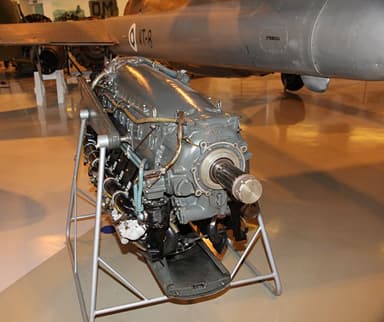
https://commons.wikimedia.org/wiki/File:SNECMA_12_T_06_Keski-Suomen_ilmailumuseo.JPG
Japanese Kawasaki Ka 87 Heavy Night Bomber
Richard Vogt of Dornier designed the Kawasaki Ka 87 heavy night bomber for Kawasaki Heavy Industries Aerospace Company (Kawasaki Jūkōgyō Kōkūuchū Kanpanii) to manufacture for the Imperial Japanese Airforce. It produced 28 of them, and they saw action in Manchuria in 1931 during the Japanese invasion.
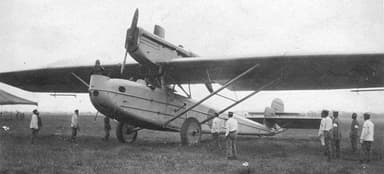
https://commons.wikimedia.org/wiki/File:Dornier_Do.N.jpg
The Kawasaki Ka 87 resembled contemporary Dornier flying boats building at the time, although it itself was a landplane. Accordingly, it was a parasol-wing, strut-braced monoplane aircraft, with two engines mounted in a push-pull nacelle above the wing.
Actual production began in 1927, although the prototype first flew on February 19, 1926. The crew included a pilot, co-pilot, bombardier, navigator, radio operator and engineer.
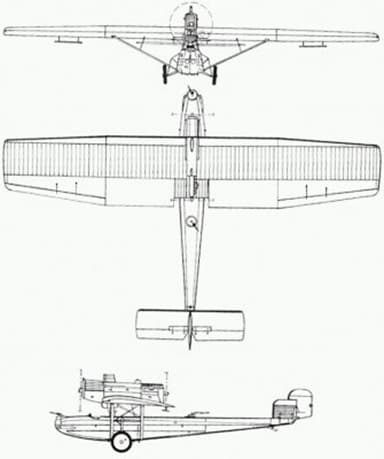
https://www.armedconflicts.com/Kawasaki-Ka-87-20843-19971-24335-37325-29190-20987-26426-t49205
The specification of the Kawasaki Ka 87 was as follows:
- Length 59 ft, height 19 ft, wing span 88 ft, wing area 1,300 sq ft
- Empty weight 9,700 lb, gross weight 16,976 lb, crew six
- Two Kawasaki BMW VI water-cooled V-12 engines, 600 hp each
- Max 112 mph, cruise 106 mph, ceiling 16,000 ft, climb 3,000 ft / 44 min
- Five 0.303 inch machine guns in various locations, 2,200 lb bomb load
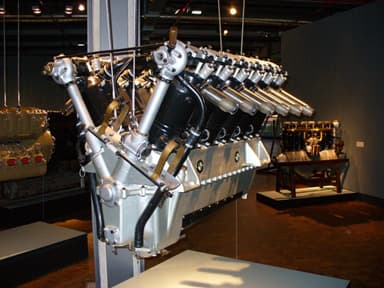
https://en.wikipedia.org/wiki/BMW_VI#/media/File:BMW_VI.jpg
MARCH 1926
Four Royal Air Force Fairey IIIDs depart on a three-month journey from Cairo to Cape Town, and thereafter to England.
British Armstrong Whitworth Argosy Three Engine, Biplane Airliner
The Armstrong Whitworth Argosy was the company’s first passenger airliner. It first flew on March 16, 1927, and a total seven were built for British Airways Ltd, Imperial Airways that first expressed interest, and United Airways Ltd.
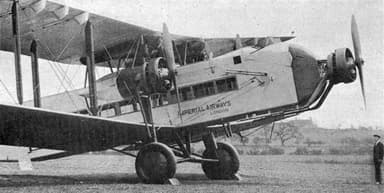
https://commons.wikimedia.org/wiki/File:Armstrong_Whitworth_AW.154_Argosy_with_townend_ring_L%27A%C3%A9ronautique_July,1929.jpg
The Armstrong Whitworth Argosy was a relatively large biplane airliner, powered by three engines. Its construction was largely composed of plywood and fabric supported by steel tubing. It performed well on its maiden flight, whereafter Imperial Airways used three to inaugurate its luxury ‘Silver Wing’ service between London and Paris.
The project was inspired by an Imperial Airways request for a new airliner. Armstrong Whitworth responded although it had no direct experience. The walls and ceiling of the ‘luxury airliner’ were clad in fabric, while the cabin featured a wooden floor – which also acted as bracing – and amenities such as openable windows and a toilet.
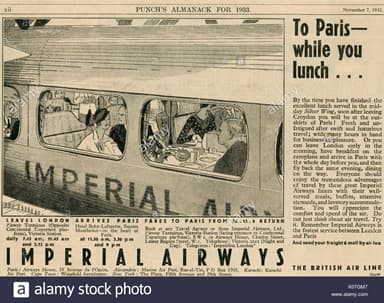
https://www.alamy.com/to-paris-while-you-lunch-in-an-imperial-airways-passenger-liner-the-image155060087.html
The specification for the Armstrong Whitworth Argosy II was as follows:
- Length 64.5 ft, height 19 ft, wing span 90 ft, wing area 1,890 sq ft
- Empty weight 12,090 lb, max take-off 19,200 lb, crew two, twenty passengers
- Three Armstrong Siddeley Jaguar IVA 14-cylinder radial engines, 420 hp each
- Max speed 110 mph, cruise 90 mph, range 405 mi, 3,000 ft / 4.5 min

https://en.wikipedia.org/wiki/Armstrong_Whitworth_Argosy#/media/File:AW_Argosy_3_view_NACA_Aircraft_Circular_No.14.png
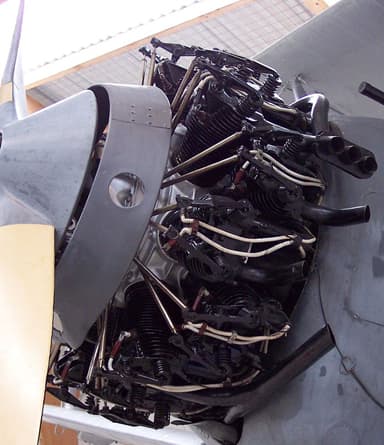
https://en.wikipedia.org/wiki/Armstrong_Siddeley_Jaguar#/media/File:Armstrong_Siddeley_Jaguar_IV_on_Hawker_Dankok.jpg
APRIL 1926
Robert Goddard launches the first liquid-fueled rocket near Auburn, Massachusetts United States.
Three unknown United States Army Air Service aircraft take photographs of an eruption of Mauna Loa volcano on the island of Hawaii, providing valuable scientific information.
The first licensed African-American pilot, Bessie Coleman dies after her mechanic, who was at the controls of her Curtiss JN-4 Jenny, leaves a wrench loose that gets stuck in a control mechanism.
MAY 1926
Airplanes operating from Wheeler Field on Oahu Island in the Territory of Hawaii complete the first known reforestation of land by aircraft.
Flight Lieutenant Gerald Boyce makes the first night carrier deck landing in history in a Blackburn Dart.
Richard Byrd and Floyd Bennett make the first flight over the North Pole in a Fokker VIIa-3m.
The United States introduces the Air Commerce Act to regulate all aspects of commercial aviation.
French Blériot 127 Large Monoplane Bomber
The Blériot 127 (or Bl-127) was a mid-1920s to mid-1930s heavy bomber the company developed from its Blériot 117 escort fighter. The large monoplane first flew on May 7, 1926. The French Armée de l’Air air force purchased 42 of the aircraft. But it only kept them in service until 1934, by which time they were totally obsolete.
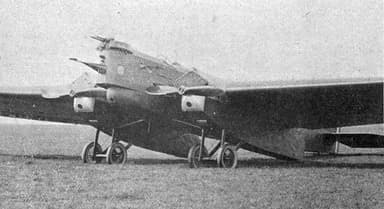
https://commons.wikimedia.org/wiki/File:Bleriot_127_L%27A%C3%A9ronautique_June,1928.jpg
The mid-wing monoplane was largely a wooden construction, with radiators located under the wings to reduce drag. The two pilots were located in open side-by-side cockpits with dual controls. However, in a departure from convention there were two gunner’s positions at the rear of its two underwing engine nacelles.
The wing airfoil was of sufficient thickness that these latter positions could be accessed from the fuselage in flight. From there, the operators had virtually unlimited field of fire to the rear. Unfortunately the aircraft proved cumbersome and ineffective in service, and was not popular with the military establishment.
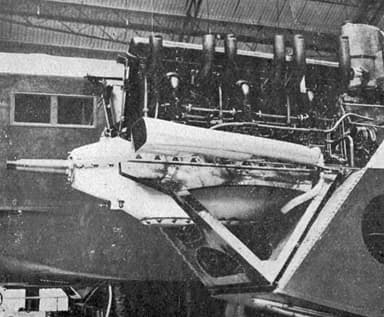
https://commons.wikimedia.org/wiki/File:Bl%C3%A9riot_127_wing_root_L%27A%C3%A9ronautique_July,1929.jpg
The specification of the Blériot 127 was as follows:
- Length 47.5 ft, height 11 ft, wing span 76 ft, wing area 950 sq ft
- Empty weight 7,169 lb, gross weight 9,846 lb, crew four to six
- Two Hispano-Suiza 12Hb V-12 water-cooled piston engines, 550 hp each
- Max 137 mph, range 801 mi, ceiling 26,600 ft, 13,000 ft / 12 min
- Two forward trainable 0.30 inch Lewis guns in nose
- 2,200 bomb load carried in an internal bay
- Two rearward trainable 0.30 inch Lewis guns in each engine nacelle
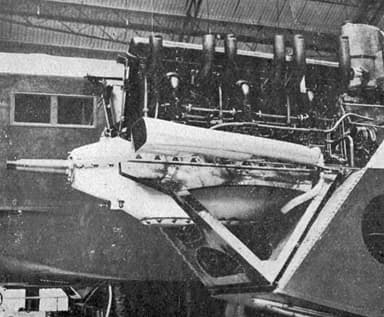
https://upload.wikimedia.org/wikipedia/commons/1/1c/Bl%C3%A9riot_127_engine_mount_L%27A%C3%A9ronautique_July%2C1929.jpg
JUNE 1926
Ludovic Arrachart, and his brother Paul flying a Potez 28, depart Paris. They fly 2,680 miles non-stop in 26 hours 30 minutes before a broken fuel pipe forces them to land in Iraq.
Alan Cobham departs on a round trip flight between England and Australia in a de Havilland DH.50. He returns successfully some three months later.
American Ford Trimotor Three Engine Passenger Aircraft
The Ford Trimotor by the Stout Metal Airplane Division of the Ford Motor Company first flew on June 11, 1926, and went on to become a ‘quantum leap over other airliners’ as far as American transcontinental travel was concerned. It provided comfortable passenger service, but also converted for military transport.
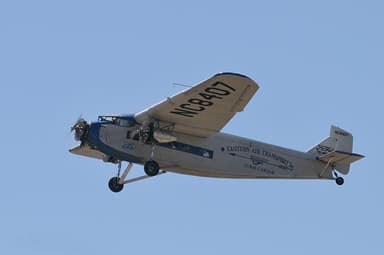
https://en.wikipedia.org/wiki/File:Ford_Trimotor_EAA.jpg
Ford produced a total 199 of its ‘Tin Goose’ aircraft. As the name suggests, they were all-metal construction with many features reminiscent of the Fokker F.VII Trimotor. They also borrowed ideas used previously by Junkers, which successfully sued Ford for patent infringements.
The company followed its tradition of making vehicles that were well designed, relatively inexpensive, and reliable for the era. The metal structure was a simple system that soon developed a reputation for ruggedness.
Ford Trimotors were still flying in 1937 when more modern aircraft like the Boeing 247 and Douglas DC-2 superseded them. However, they continued to serve for decades thereafter, carrying heavy freight for mining operations in jungles and mountains.
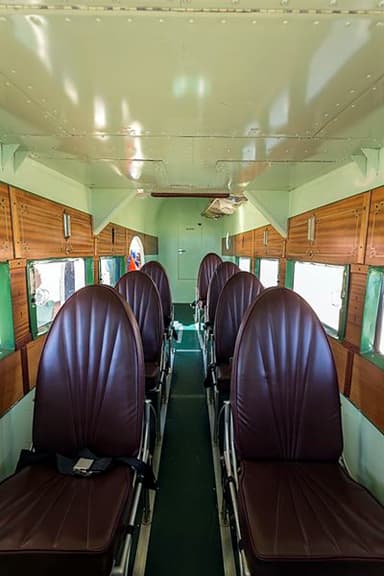
https://upload.wikimedia.org/wikipedia/commons/0/01/NC8407_Ford_4-AT_Tri-Motor_MD2.jpg
The specification of the Ford 4-AT-E Trimotor was as follows:
- Length 49.5 ft, height 11.5 ft, wing span 74 ft, wing area not known
- Empty weight 6,500 lb, gross weight 10,130 lb, crew three, eleven passengers
- Three Wright J-6-9 Whirlwind 9-cylinder radial piston engines, 300 hp each
- Max 132 mph, cruise 107 mph, ceiling 16,500 ft, climb 7,200 ft / 10 min
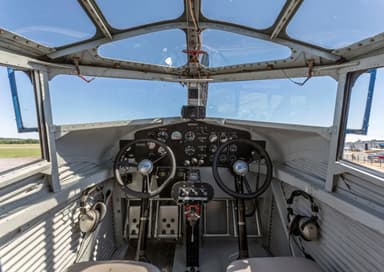
https://upload.wikimedia.org/wikipedia/commons/3/3d/NC8407_Ford_4-AT_Tri-Motor_MD1.jpg
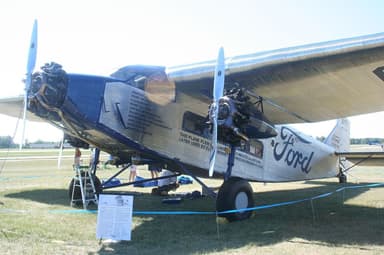
https://commons.wikimedia.org/wiki/File:Ford_4AT_Trimotor.JPG
American Fairchild FC-1 Multipurpose Utility Monoplane
Sherman Fairchild was an American entrepreneur who ran several successful businesses, including an aerial photographic studio. He became frustrated by the cost and suitability of available aircraft, obtained his own workshop facilities, and built his own. The Fairchild FC-1 was a great success and he sold some 180 derivatives.
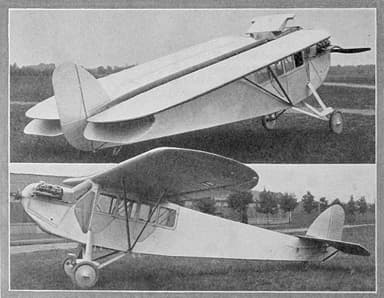
https://commons.wikimedia.org/wiki/File:Fairchild_FC-1_Aero_Digest_July_1926.jpg
Fairchild produced a conventional high-wing, strut-braced monoplane. But it had a fully enclosed cabin and tailwheel undercarriage, when it first flew on June 14, 1926. The wooden wings folded back for storage. It featured an extensively-glazed cabin offering plenty of vantage points for photographers.
The production FC-2 model followed, with a range of power plants, and a choice of wheeled, ski, or float undercarriage. The later FC-2L had an enclosed and heated cabin with extra windows to allow for an improved downward view. The plucky little aircraft succeeded in a number of military and civilian roles, and record-setting flights.
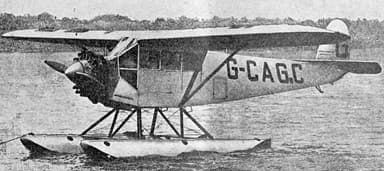
https://commons.wikimedia.org/wiki/File:Fairchild_FC-2_L%27Air_October_1,1927.jpg
The specification of the Fairchild FC-2 was as follows:
- Length 31 ft, height 9 ft, wing span 44 ft, wing area 290 sq ft
- Empty weight 2,160 lb, gross weight 3,600 lb, pilot plus passenger(s)
- Wright J-5 , nine-cylinder air-cooled radial aircraft engine 200 hp
- Max speed 122 mph, range 700 mi, ceiling 11,500 ft, climb 565 ft / min
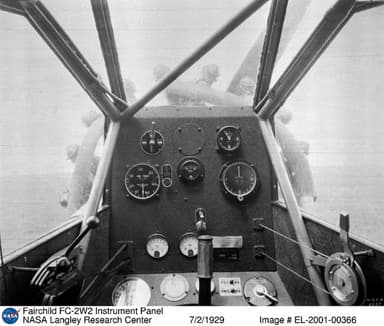
https://en.wikipedia.org/wiki/File:EL-2001-00366.jpg

https://en.wikipedia.org/wiki/Fairchild_FC-2#/media/File:American_Airways_Fairchild_FC-2.jpg
German Junkers W-33 Single Engine Monoplane Transport
The Junkers W-33 was aerodynamically and structurally advanced for its time, being a clean, low-wing all-metal cantilever monoplane. Some 199 were built after its maiden flight on June 17, 1926. It earned a place in history by completing the first east–west non-stop heavier-than-air crossing of the Atlantic.
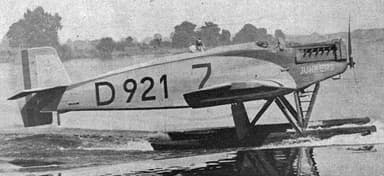
https://upload.wikimedia.org/wikipedia/commons/c/c3/Junkers_W.33_L%27A%C3%A9ronautique_December%2C1926.jpg
The Junkers W-33 was an all-metal monoplane, but without any wing bracing. It used a duralumin structure covered with corrugated dural skin. A large port-side door gave access to the freight compartment for easy loading. Production began in 1927, and continued through to 1934.
Numerous civil operators purchased the aircraft, and used them as general transports and specialized mail planes. Others became successful survey aircraft, or crop-sprayers. On May 26, 1929 a much modified version (W-34) set a new world record by reaching 41,800 ft.
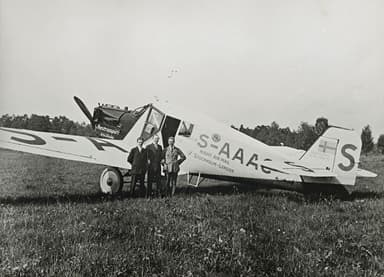
https://commons.wikimedia.org/wiki/File:Junker_W_33_(1).jpg
The specification of the Junkers W-33 land plane version was as follows;
- Length 34.5 ft, height 11.5 ft, wing span 58 ft, wing area 450 sq ft
- Empty weight 2,690 lb, max take-off 5,512 lb, crew two
- Junkers L5 6-cylinder water-cooled in-line piston engine, 306 hp
- Max speed 110 mph, cruise 93 mph, range 620 mi, ceiling 14,100 ft
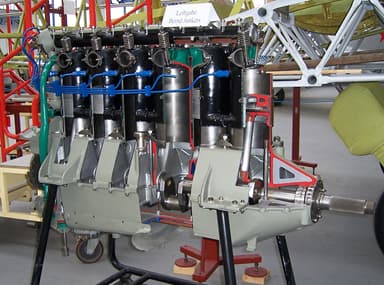
https://en.wikipedia.org/wiki/Junkers_L5#/media/File:Junkers_L_5_im_Technikmuseum_Hugo_Junkers_Dessau_2010-08-06_01.jpg
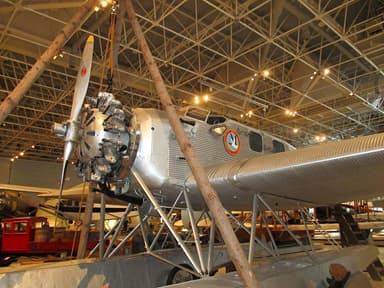
https://commons.wikimedia.org/wiki/File:Junkers_W34_CASM_2012_2.jpg
JULY 1926
Two Deutsche Luft Hansa Junkers G.24s depart Berlin on a round trip flight to Beijing. They return successfully some two-and-a-half months later.
A United States Navy submarine surfaces, and removes a small, collapsible Martin MS-1 seaplane from its hangar. Its crew assembles it and launches it. Then they retrieve the aircraft, disassemble it, and put it back in the hangar before the submarine submerges.
French Latécoère 21 Passenger Flying Boat Airliner
The Latécoère 21 was a seven-seater parasol monoplane that first flew commercially in July 1926, although it was completed the previous year. It was one of the first flying boats the company made, and it empowered Lignes Aériennes Latécoère airline to deliver mail between Marseilles and Algiers.

http://www.aviastar.org/air/france/latecoere_l-21.php
The Latécoère 21 had a parasol wing over lower stub wings that provided support for the struts, and anchoring points for the two side pontoons. The open pilots’ cockpits were in line with the parasol leading edge, while the seven passengers relaxed in enclosed accommodation.
The specification of the Latécoère 21 was as follows:
- Length 58 ft, height 16 ft, wing span 72 ft, wing area 947 sq ft
- Empty weight 3,530 lb, gross weight 5,730 lb, crew two, seven passengers
- Two Gnome et Rhône 9A Jupiter engines in push-pull configuration, 480 hp each
- Max speed 107 mph, range 500 mi, service ceiling 11,800 ft
French Macchi M.39 Record-Breaking Low Wing Seaplane
The Macchi M.39 was an advanced twin-float seaplane using mixed metal and wooden construction, and with a single, wire-braced lower wing Two-thirds of the wing’s upper surface supported low drag surface radiators. The pilot’s cockpit, situated parallel with the trailing edge, had a windscreen profiled into the fuselage decking to reduce aerodynamic drag.
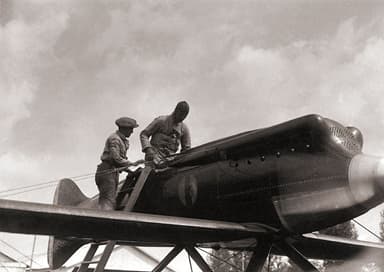
https://commons.wikimedia.org/wiki/File:Macchi_M.39_testing.jpg
The first flight took place in July, 1926. The left wingtip was slightly farther from the fuselage than the right, to allow it to make tighter left-hand turns on the Schneider Trophy circuit. Later that year pilot Mario de Bernardi won the trophy after reaching 246 miles per hour.
Macchi built three versions of the M.39, namely three racing aircraft, two trainers, and one static airframe for further development. Four days after winning the Schneider Trophy, pilot Mario de Bernardi achieved a new speed record of 258 mph over a two mile course.

https://commons.wikimedia.org/wiki/File:SchneiderCup1929_Macchi_M39.jpg
The specification of the Macchi M.39 Racer was as follows:
- Length 25.5 ft, height 9.5 ft, wing span 30.5 ft, wing area unknown
- Empty weight 2,771 lb, gross weight 3,466 lb, crew one
- Fiat AS.2 V-12 liquid-cooled piston engine, 801 hp, max speed 273 mph
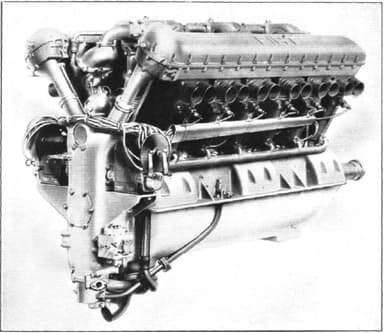
https://en.wikipedia.org/wiki/Fiat_AS.2#/media/File:Fiat_AS-2_882hp.png
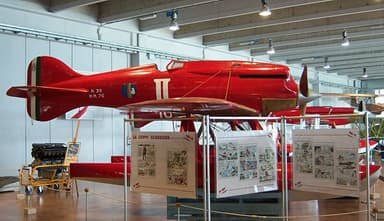
https://commons.wikimedia.org/wiki/File:Macchi_M.39_right_2009-06-06.jpg
AUGUST 1926
An Air Union Blériot 155 is flying in bad weather on a scheduled flight when it crashes into a barn in Kent England, killing both crew and two of its thirteen passengers
British Boulton Paul Sidestrand Twin Engine, Medium Bomber
The Boulton Paul Sidestrand biplane bomber was developed by Boulton & Paul Ltd of Norwich, England, and first flew in the late summer of 1926. The company offered it to the Royal Air Force under Specification 9/24 for an all-metal, twin-engine medium bomber, and they supplied 18 in several variants.
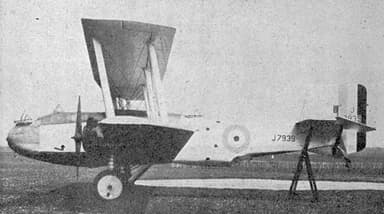
https://commons.wikimedia.org/wiki/File:Boulton_Paul_Sidestrand_Le_Document_a%C3%A9ronautique_November,1928.jpg
The design phase involved extensive use of a wind tunnel to reduce drag. The fuselage was made from steel tube with a fabric and plywood covering over. Aluminum alloys were used for elements bearing lower structural loads, such as the outer interplane struts and wing ribs. This produced an agile aircraft capable of aerobatic maneuvers such as loops, rolls and spins.
The Sidestrand had three open gun positions, in the nose, dorsal and ventral respectively, with the fuselage gunners choosing positions according to where they flew in formation. While the bomb-aimer had a small compartment beneath the cockpit. But this changed to a bomb-aiming window in the nose in the Mk III version.
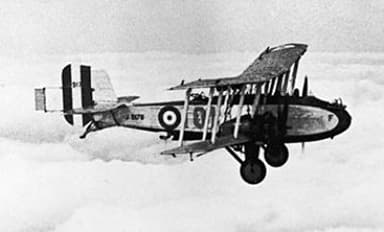
https://upload.wikimedia.org/wikipedia/commons/b/b0/BP_Sidestrand.jpg
The specification of the Boulton Paul Sidestrand MK III was as follows:
- Length 46 ft, height 14.5 ft, wing span 72 ft, wing area 979 sq ft
- Empty weight 6,370 lb, gross weight 10,200 lb, crew three
- Two Bristol Jupiter VIIIF 9-cylinder air-cooled radial engines, 460 hp each
- Max speed 139 mph, range 520 mi, ceiling 20,800 ft, climb 6.5 min / 6,500 ft
- Two 0.303 inch Lewis guns, 1,040 pound bomb load carried internally

https://en.wikipedia.org/wiki/Bristol_Jupiter
SEPTEMBER 1926
French World War I ace René Fonck attempts to take off from Roosevelt Field on Long Island, New York, in a severely overloaded Sikorsky S-35 for a nonstop transatlantic flight to Paris. The aircraft loses a wheel on take-off, fails to gain lift, cartwheels off a bluff, and bursts into flames, killing two of its crew. But the pilot survives.
French aviators Dieudonné Costes and René de Vitrolles fly 2,546 miles from Paris, France, to Assuan, Egypt in an attempt to break the world distance record.
German Junkers G 31 Triple Motor, All-Metal Airliner
The Junkers G 31 was a remarkable airliner for its time, on account of its streamlined, low wing cantilever wing design. It went down in history thanks to the quality of its passenger amenities, although Junkers only produced thirteen of the model after its first flight in the latter half of 1926.
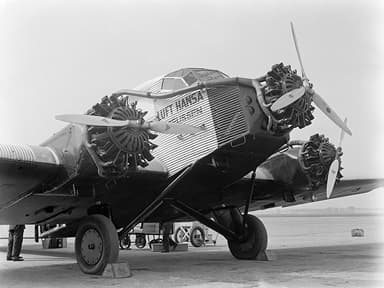
https://en.wikipedia.org/wiki/File:Junkers_G_31_Amsterdam_(3).jpg
Professor Hugo Junkers determined to follow up on the commercial success of his trimotor Junkers G 24. But this time he wanted something larger, simpler to operate, and with more comfortable facilities for passengers. He went as far as investigating retractable undercarriage, but the added weight was greater than the aerodynamic advantage.
The passenger cabin had three compartments, one with eleven regular passenger seats, and one with four jump seats for day passengers. The third section contained the lavatory. Non-complimentary food and drink were available on the flight. While at night the large cabin converted to ten beds.
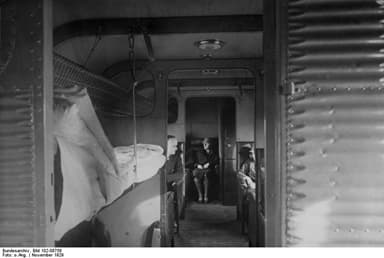
https://commons.wikimedia.org/wiki/File:Bundesarchiv_Bild_102-08758,_Flugzeug_Junkers_G-31,_Kabine_mit_Betten.jpg
The specification of the Junkers G 31 was as follows:
- Length 54 ft, height 19.5 ft, wing span 100 ft, wing area 1,097 sq ft
- Empty 5,250 lb, gross 18,760 lb, crew four, fifteen day / 10 night passengers
- Three BMW-built Pratt & Whitney Hornet radial engines, 525 hp each
- Max 131 mph, cruise 106 mph, range 528 mi, ceiling 14,400 ft, climb 10 ft / min
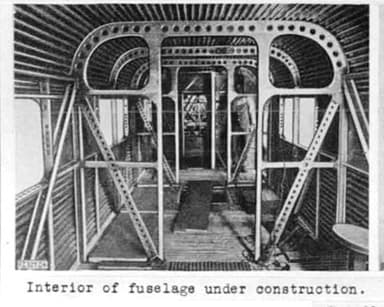
https://commons.wikimedia.org/wiki/File:Junkers_G.31_detail_photos_NACA_Aircraft_Circular_54.jpg
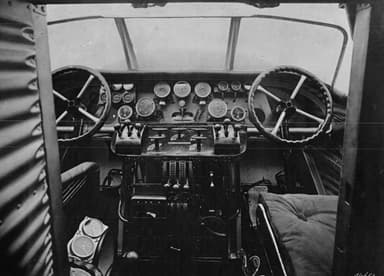
https://commons.wikimedia.org/wiki/File:Junkers_G.31_cockpit_photo_NACA_Aircraft_Circular_54.jpg
German Junkers A 35 Two-Seater Cantilever Monoplane
The Junkers A 35 cantilever monoplane was a multipurpose aircraft, suitable for postal deliveries, training and military purposes. It first flew in the latter half of 1926, whereafter Junkers produced a total 186 at Dessau in Germany, and AB Flygindustri in Limhamn, Sweden.

https://commons.wikimedia.org/wiki/File:Junkers_A.35-W_Le_Document_a%C3%A9ronautique_August,1927.jpg
The Junkers A 35 was the latest in a series including the J10/J11, the A 20, A 25, A 32, and finally the A 35. Hence, it was by pedigree a two-seat multi-purpose fighter aircraft. Post war penalties limited manufacture in Germany, and so Junkers arranged assistance from AB Flygindustri in Limhamn, Sweden.
The aircraft was originally designated the A 20. The A25 only applied after adoption of the Junkers L5 engine, and some tail modifications to enhance maneuverability and operation. Junkers supplied it to air forces in Afghanistan, Bulgaria, Chile, China, Finland, Germany, Hungary, Iran, Soviet Union, and Turkey.

https://en.wikipedia.org/wiki/File:Yesil_Bursa_aircraft.jpg
The specification the Junkers A 35 was as follows:
- Length 27 ft, height 11.5 ft, wing span 52 ft, wing area 321 sq ft
- Empty weight 2,370 lb, gross weight 3,307 lb, crew two
- Junkers L 5 6-cylinder water-cooled inline piston engine 310 hp
- Max speed 129 mph, cruise 115 mph, service ceiling 21,000 ft
- Two fixed, forward-firing, synchronized 0.303 inch Vickers machine guns
- Two flexible 0.303 inch Lewis guns on scarff ring in the rear cockpit
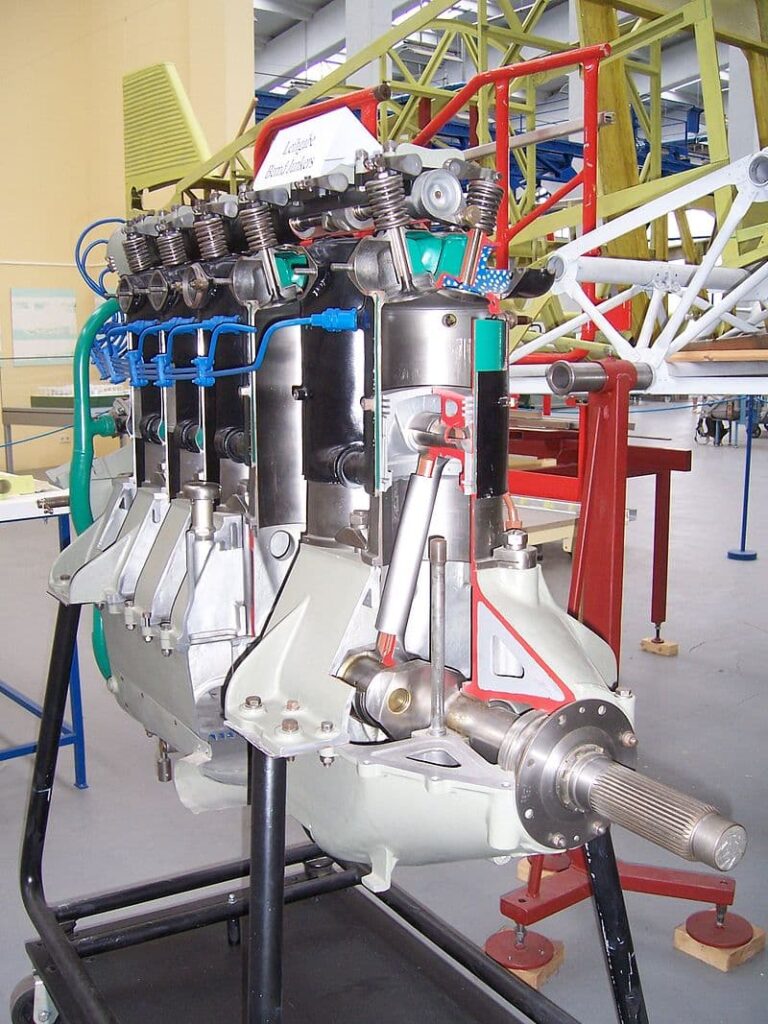
https://en.wikipedia.org/wiki/Junkers_L5#/media/File:Junkers_L_5_im_Technikmuseum_Hugo_Junkers_Dessau_2010-08-06_02.jpg
British Avro Avian 581 Light Biplane Personal Aircraft
The Avro Avian 581 was a small, wooden biplane intended for the Lympne light aircraft trials in September 1926. It performed well enough, but was disqualified after engine failure. However, this was not the end of the line for the design proved suitable as a civil tourer or trainer, although the de Havilland Moth and its descendants consistently outsold it.
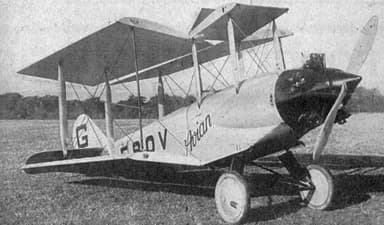
https://commons.wikimedia.org/wiki/File:Avro_581_Avian_G-EBOV_prototype_with_Genet_engine_Les_Ailes_May_5,1927.jpg
The Avro Avian prototype was essentially a rework of the Cierva C.9 autogyro Avro collaborated in developing. Except it was fitted with conventional biplane wings, and powered by a conventional radial engine. In 1927, Avro re-engined it with a more powerful motor and began producing the first of 405 Type 581 aircraft.
The Avro Avian was extensively used as a civil tourer or trainer, with many being sold overseas from Britain. They were also assembled in the United States and Canada. One modified version completed a 15½-day solo flight from Croydon, UK to Darwin, Australia. Military versions sold in Canada, China, Estonia, South Africa, Spain and United Kingdom.
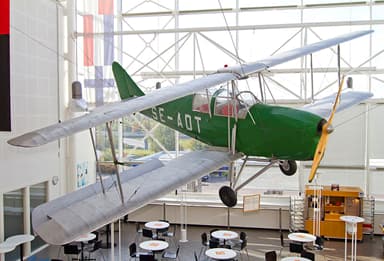
https://en.wikipedia.org/wiki/File:Avro_534_Avian_IV_SE-ADTinStockholm.jpg
The specification of the Avian IV M was as follows:
- Length 24 ft, height 8.5 ft, wing span 28 ft, wing area 245 sq ft
- Empty weight 1,005 lb, gross weight 1,523 lb, crew two
- Cirrus Hermes I 4-cylinder air-cooled in-line piston engine, 105 hp
- Max 105 mph, cruise 90 mph, range 360 mi, ceiling 12,500 ft, climb 600 ft / min

https://en.wikipedia.org/wiki/File:Avro_Avian_III_3-view_NACA_Aircraft_Circular_No.70.jpg
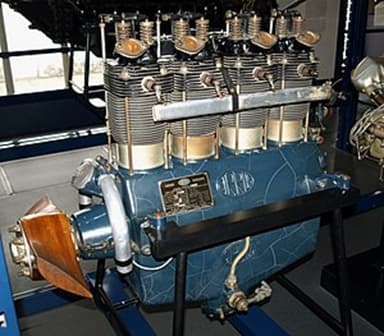
https://en.wikipedia.org/wiki/ADC_Cirrus
British de Havilland DH.66 Hercules Passenger Airplane
The de Havilland DH.66 Hercules was a more modern replacement for the Airco DH.10 Amiens used on the British air force airmail service. Imperial Airways also used it to provide long-distance service to far-flung regions. It may have been slow and cumbersome, but it proved reliable after trialling on September 30, 1926.
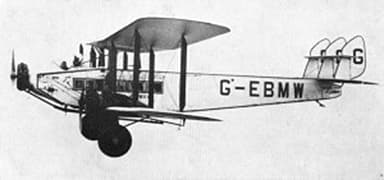
https://en.wikipedia.org/wiki/File:De_Havilland_Hercules.jpg
The original de Havilland DH.66 Hercules was a wooden, plywood-covered biplane, although the company moved away to tubular steel to counter rapid deterioration in tropical areas.
The two pilots were in an open cockpit above the nose, while a plywood cabin suspended in the framework provided accommodation for seven passengers and the wireless operator.
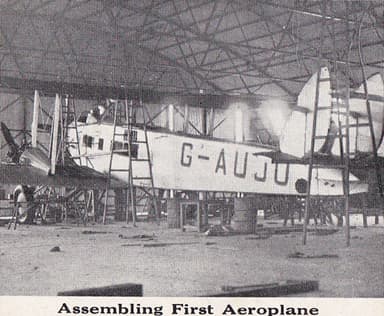
https://en.wikipedia.org/wiki/File:West_Australian_Airways_5.jpg
The specification of the de Havilland DH.66A Hercules was as follows;
- Length 55.5 ft, height 18 ft, wing span 79.5 ft, wing area 1,547 sq ft
- Empty 9,060 lb, gross 15,660 lb, crew three, seven passengers, 465 cu ft mail
- Three Bristol Jupiter VI 9-cylinder radial piston engines, 420 hp each
- Max 128 mph, cruise 110 mph, ceiling 13,000 ft, climb 765 ft / mi,
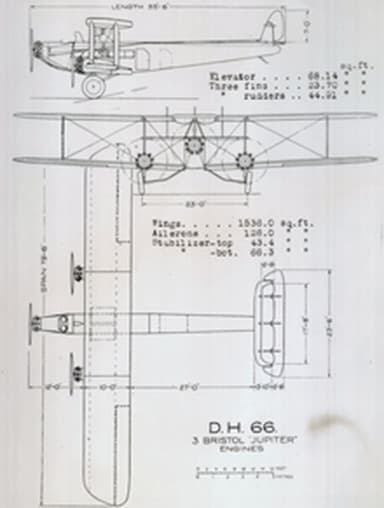
https://en.wikipedia.org/wiki/De_Havilland_Hercules#/media/File:De_Havilland_DH.66_3_view_NACA_Aircraft_Circular_No.10.png

https://commons.wikimedia.org/wiki/File:De_Havilland_Hercules-a.jpg
OCTOBER 1926
An Air Union Blériot 155 is flying from Paris to London when an engine catches alight. The emergency landing in Kent is unsuccessful. The fire consumes all seven people on board.
United States Navy Curtiss F6C Hawk fighters complete the first (simulated) dive bombing attack on friendly capital ships leaving San Pedro Harbor, California,
French aviators Dieudonné Costes and René de Vitrolles break the world distance record, flying 3,351 miles from Paris, France, to Jask, Persia, as part of a 12,187-mile Paris-India-Paris flight.
American Spartan C3 Open Cockpit Utility Biplane
The Spartan C3 was in some ways an epitome of a golden age of flight, in which a bunch of enthusiasts could build an airplane so good it justified forming a manufacturing company, and selling approximately 122 of them. It is still fondly remembered by many for its prowess as a barnstormer, a trainer, and an air taxi.
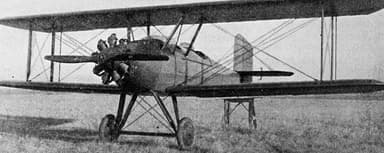
https://en.wikipedia.org/wiki/File:Spartan_C3_left_front_Aero_Digest_March_1927.jpg
The original, privately-owned Spartan C3 was generally a wood construction, covered over in doped fabric except for the nose which had steel panels. The Spartan Aircraft Company experimented with a variety of different engines, and modifications to the fuselage and wings during production.
The aircraft found customers among private flying schools, while others used it for barnstorming with two passengers on board. It was also quite popular with oil exploration companies, who appreciated its ability to shuttle crews to remote locations when the oil fields were opening up.
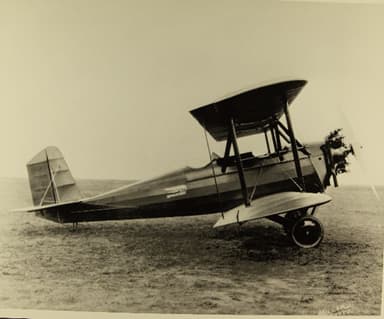
https://commons.wikimedia.org/wiki/File:Spartan_C-3_side.jpg
The specification of the preserved Spartan C3-165 at Old Rhinebeck is as follows:
- Length 23.5 ft, height 8.5 ft, wing span 32 ft, wing area 291 sq ft
- Empty weight 1,650 lb, gross weight 2,618 lb, crew one, passengers two
- Wright J-6-5 Whirlwind 5 cylinder air-cooled radial engine, 165 hp
- Max 118 mph, cruise 100 mph, range 600 mi, ceiling 12,000 ft, 6,900 ft / 10 min

https://en.wikipedia.org/wiki/File:Spartan_C3_Old_Rhinebeck,NY_MDF_2033.jpg

https://commons.wikimedia.org/wiki/File:Spartan_C3_cockpit.jpg
NOVEMBER 1926
Mario de Bernardi sets a new world speed record of 246 miles per hour, flying a Macchi M.39 seaplane during the 1926 Schneider Trophy race.
T. Neville Stack and B. S. Leete leave England in an attempt to reach India by air in a de Havilland DH.60. They arrive some two months later.
Mario de Bernardi beats his world speed record after four days, by achieving 258 miles per hour in the same Macchi M.39 seaplane.
American Boeing F2B Fighter Aircraft / Stunt Plane
The Boeing F2B was an offshoot of the Boeing FB6 / 15 the company intended as a carrier based fighter, using the same welded-tubing fuselage and wooden-frame wings as for the Model 15. The prototype that first flew on November 3, 1926 achieved a speed of 154 mph which impressed the US Navy into ordering 32 of them.
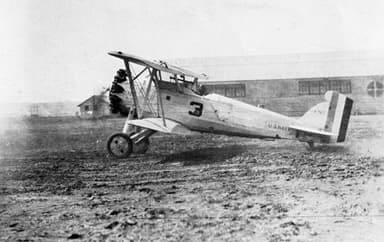
https://commons.wikimedia.org/wiki/File:Boeing_F2B-1_of_VB-2B_at_NAS_North_Island_1928.jpeg
However, the US Navy declined to repeat the order, after assigning the aircraft to two squadrons on the carrier Saratoga. But Boeing did export one each to Brazilian Naval Aviation, and Imperial Japanese Navy Service.
Hence the Boeing F2B-1 is better remembered for its service in the first U.S. Naval aerobatic team, drawn from the same carrier fleet. The Team was officially called ‘Three Sea Hawks’, although some media preferred the name ‘Suicide Trio’ on account of the pilots performing stunts while the aircraft were tethered to each other.
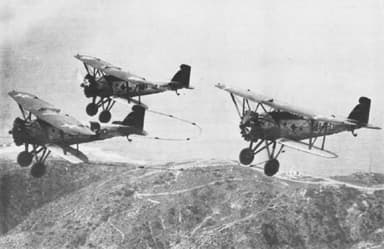
https://en.wikipedia.org/wiki/File:F2Bs_3Seahawks_1928_NAN4-79.jpg
The specification of the Boeing F2B-1 was as follows:
- Length 23 ft, height 9 ft, wing span 30 ft, wing area 243 sq ft
- Empty weight 1,989 lb, max take off 2,805 lb, crew one
- Pratt & Whitney R-1340-8 Wasp radial engine, 425 hp
- Max 158 mph, cruise 132 mph, range 315 mi, ceiling 21,500 ft, climb 1,890 ft / min
- Two forward-firing machine guns, five 25 lb bombs under fuselage / lower wing
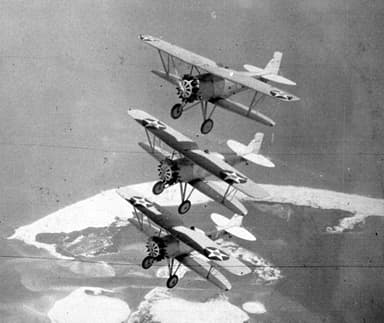
https://commons.wikimedia.org/wiki/File:Boeing_F2Bs_in_flight_circa_in_1929.jpeg
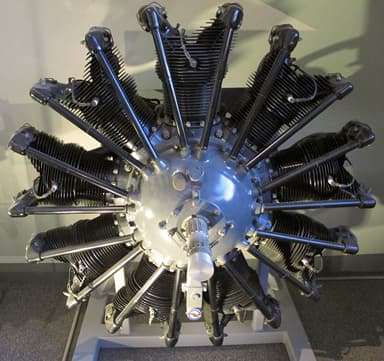
https://en.wikipedia.org/wiki/Pratt_%26_Whitney_R-1340_Wasp#/media/File:Pratt_and_Whitney_Wasp.jpg
DECEMBER 1926
Bert Hinkler and John F. Leeming successfully land on, and take off from the summit of England’s third-highest peak Helvellyn, flying an Avro 585 Gosport biplane.





